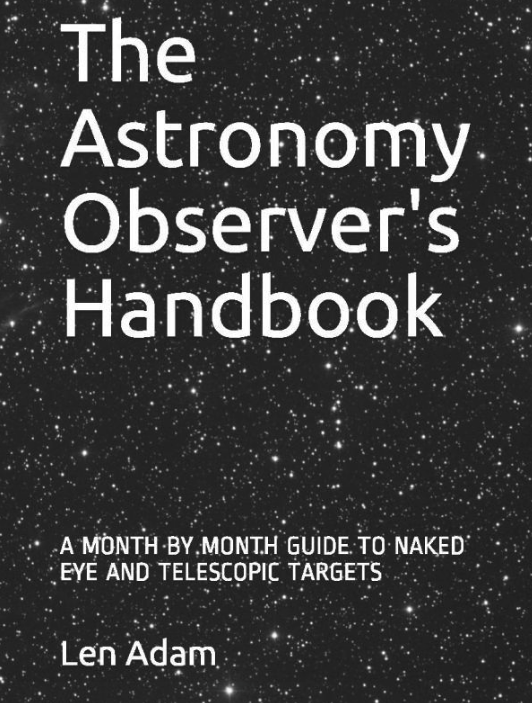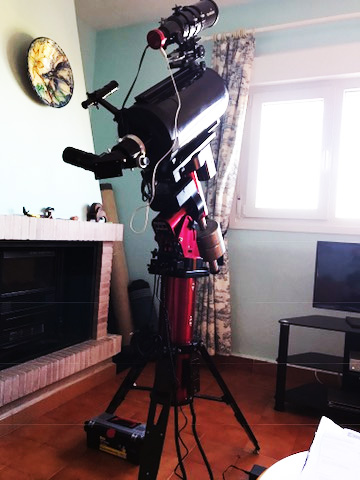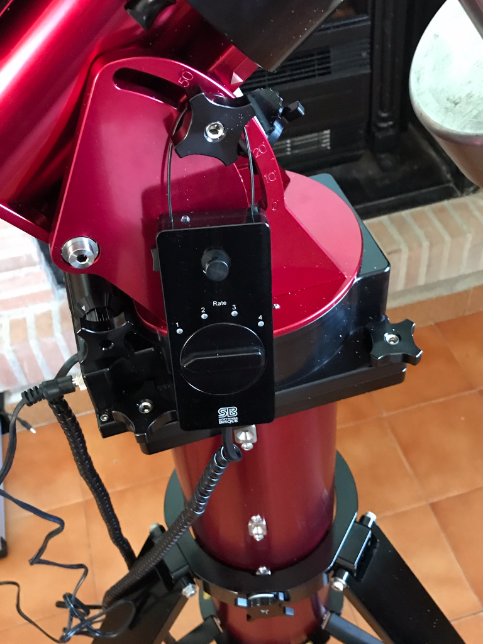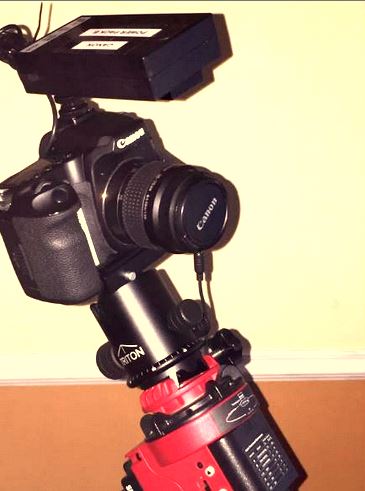Day 39 Mars and Martians - Frank Acfield Lecture on Mars - Identifying stars on any image on the web.
 Saturday, March 22, 2014 at 10:01PM
Saturday, March 22, 2014 at 10:01PM It is 6:39 a.m. here in Spain ( 05:39 U.T.) and the Moon and Mars are visible in the lightening sky. I used my ETX90 on a tripod to view Mars through the front window of my litttle house here. The ETX was very out of focus and I had to use the lamp that is fixed underneath the Cabrera arch to get approximate focus before I moved on to Mars. It was quite small with the 32mm eyepiece on the ETX. No sign of missiles being fired from "a great gun" on the surface as described at the beginning of the H.G. Wells book "The War of the Worlds" - well that's one less thing to worry about! I looked up the book in my Kindle to find the reference to Ogilvy the astronomer in his observatory.
" I still remember that vigil very distinctly: the black and silent observatory, the shadowed lantern throwing a feeble glow upon the floor in the corner, the steady ticking of the clockwork of the telescope, the little slit in the roof - an oblong profundity with the stardust streaked across it. Ogilvy moved about, invisible but audible. Looking through the telescope one saw a circle of deep blue and the little round planet swimming in the field. It seemed such a little thing, so bright and small and still, faintly marked with transverse stripes, and slightly flattened from the perfect round. But so little it was , so silvery warm, - a pin's head of light! It was as if it quivered, but really this was the telescope vibrating with the activity of the clockwork that kept the planet in view"
The reference to the transverse stripes and polar flattening seems to me more like a description of Jupiter than Mars but it is fiction after all! I was trying to remember the description of Mars in the Edgar Rice Burroughs book "A Princess of Mars" (recent film version "John Carter" }and 74 pence and 30 seconds later there was the book on my kindle! I wonder what Wells and Burroughs would have thought of that. I will read the downloaded book later!
This was the situation with the Moon and Mars. Saturn was blocked by a building so I could not see it.
Here is the data provided by Cartes du Ciel for the planet at this time from this location
Magnitude: -1.1
Diameter: 13.9 "
Illuminated fraction: 0.985
Phase: -14 ?
Distance: 0.6736 au
Solar distance: 1.6363 au
Velocity: 22.4km/s
Position angle: 35.9
Pole inclination: 19.7
Sun inclination: 24.2
Central meridian: 311.02
Ephemeris: DE405
Date: 2014-03-22 05h39m00s
Coordinates: Apparent Topocentric
Apparent RA: 13h36m17.08s DE:-07?00'29.8"
Mean of the date RA: 13h36m15.31s DE:-07?00'22.5"
Mean J2000 RA: 13h35m31.24s DE:-06?55'53.6"
Ecliptic L: +204?51'49" B:+02?48'43"
Galactic L: +321?54'29" B:+54?18'21"
Visibility for your observatory:
Cabrera 2014-03-22 05h39m00s ( UTC )
Universal Time: 2014-03-22T05:39:00 JD=2456738.73542
Local sidereal time:17h28m59s
Hour angle: 03h52m 42s
Azimuth:+243?54'40.5"
Altitude:+20?09'53.9"
Rise: 20h02m Azimuth+98?17'
Culmination: 1h47m +45?56'
Set: 7h28m Azimuth+261?41'
I just spotted this Patrick Moore video on Twitter from the West Yorkshire Astronomical Society that I follow - have a look by clicking on the image below..
Of course this all seems dated as we can satisfy our curiosity about Mars in a much simpler way now. Watch this very brief Curiosity Rover update from a few days ago. When the video ends it goes straight on to the previous report so stop when you have had enough!
On Day 33 I had discussed Frank Acfield and his course of lectures 45 years ago.
I looked back at the notes I had taken on 29th January 1969 about Mars which was the topic of Lecture No. 7.
I was looking back at images taken here in Cabrera with my Canon 40D and 38mm lens and came across this one
With so many stars it can be difficult to work out which part of the sky this is so I thought I would try astrometry.net which solves images and labels them. I submitted this and 30 seconds later I was told that it was successful and an annotated version of my image was returned.
Additional details were returned
I also submitted this image

and this solution was returned
After a little bit of work in photoshop.....
I managed to get time on T13 in Siding Spring again and took this 10 minute image of IC 2177
This was the effect of solving it in astrometry.net
The evening approached and it looks like another clear evening. I set up the telescope with the Canon 40D attached to an old 135mm lens that I used to use when I had my old Zenith film camera (actually I still have it) with the appropriate adaptor. I went through the usual 6 star alignment - this time I used a flexible ball head between the camera and camera mount on the 4 inch refractor so I could align the two imaging systems. Again perfect go to once aligned. I was using CCDSoft on the 4 inch and using that as a guider effectively to test out the 135mm lens. I was using APT software again on the Canon. The main difficulty is of achieving focus on the lens as I was using the 30m powered USB cable to run both cameras and the telescope control from inside the house but I managed it with a bit of trial and error. In using the Nexstar remote handset on the laptop screen during alignment the instructions say that I should not use the "real" handset but I found that if I did it was not a problem. When I told the telescope to slew to an alignment star using the simulated handset I would go out and check through the finder "scope" and use the real handset to centre the star. I would then go indoors and do the final adjustment to centre the star in the CCDSoft reticle using the simulated handset and then press ENTER to tell the telescope it was centred in the finder and then ALIGN to tell it it was centred in the "eyepiece". It may sound complicated but in fact it is extremely straightforward and simple. The polar alignment that I did originally was the key.
The telescope sits outside under its scopecoat on the tripod and I find that extremely satisfactory with my telescope 2 setup. I know it is Spain and it rarely rains but when it does the scopecoat does its job. I don't see any problems in doing this in the UK to save having to dismantle the telescope constantly. I have 3 scopecoats here - one for Telescope 2 as described, one for Telescope 3 (TAL1) and for the C14. With my C14 and Paramount I need stepladders to be able to take off or put on its scopecoat - that is the most difficult part! But the C14 is still sitting indoors waiting for its suitable location - I am working on that!
From the terrace towards the La Pilica hill I could see Ursa Major standing on its tail to the North East, Jupiter high in the sky to the South, Castor and Pollux shining brightly, the Pleiades to the West, Cassiopeia geting ready to slide under Polaris as Ursa Major went overhead later on and a glowing mass of stars in a way that I would never see from Lancashire.
I am using Microsoft "One Drive" to simplify saving images so I set up APT with today's date on OneDrive on my controlling laptop knowing that the images would be accessible from my other laptop.
 [Your Name Here] | Comments Off |
[Your Name Here] | Comments Off | 







